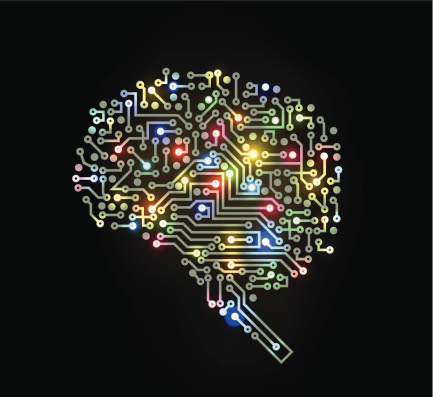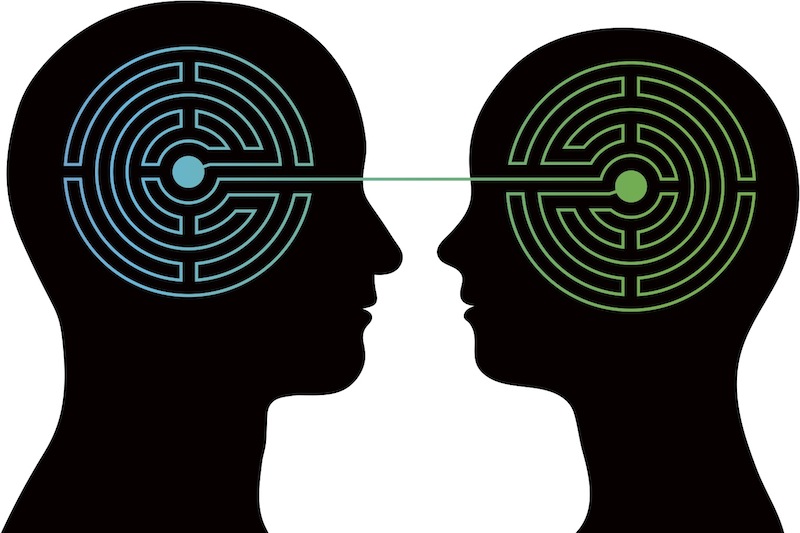Blog
- Researchers Tie Social Behavior to Activity in Specific Brain Circuit
- By Jason von Stietz
- June 27, 2014
-

Photo Credit: Getty Images Can social behavior be linked back to specific wiring in the brain? Researchers at Stanford University examined the relationships between a specific circuit in the brain and the tendency of mammals to interact socially. When researchers stimulated this circuit in mice they instantly engaged in social behavior with unfamiliar mice. In contrast, when researchers inhibited this circuit the mice refrained from social activity and ignored the other mice. Medical Xpress discussed the study in a recent article:
The new findings, to be published June 19 inCell, may throw light on psychiatric disorders marked by impaired social interaction such as autism, social anxiety, schizophrenia and depression, said the study's senior author, Karl Deisseroth, MD, PhD, a professor of bioengineering and of psychiatry and behavioral sciences. The findings are also significant in that they highlight not merely the role of one or another brain chemical, as pharmacological studies tend to do, but rather the specific components of brain circuits involved in a complex behavior. A combination of cutting-edge techniques developed in Deisseroth's laboratory permitted unprecedented analysis of how brain activity controls behavior.
Deisseroth, the D.H. Chen Professor and a member of the interdisciplinary Stanford Bio-X institute, is a practicing psychiatrist who sees patients with severe social deficits. "People with autism, for example, often have an outright aversion to social interaction," he said. They can find socializing—even mere eye contact—painful.
Deisseroth pioneered a brain-exploration technique, optogenetics, that involves selectively introducing light-receptor molecules to the surfaces of particular nerve cellsin a living animal's brain and then carefully positioning, near the circuit in question, the tip of a lengthy, ultra-thin optical fiber (connected to a laser diode at the other end) so that the photosensitive cells and the circuits they compose can be remotely stimulated or inhibited at the turn of a light switch while the animal remains free to move around in its cage.
Using optogenetics and other methods he and his associates have invented, Deisseroth and his associates were able to both manipulate and monitor activity in specific nerve-cell clusters, and the fiber tracts connecting them, in mice's brains in real time while the animals were exposed to either murine newcomers or inanimate objects in various laboratory environments. The mice's behavioral responses were captured by video and compared with simultaneously recorded brain-circuit activity.
In some cases, the researchers observed activity in various brain centers and nerve-fiber tracts connecting them as the mice variously examined or ignored one another. Other experiments involved stimulating or inhibiting impulses within those circuits to see how these manipulations affected the mice's social behavior.
To avoid confusing simple social interactions with mating- and aggression-related behaviors, the researchers restricted their experiments to female mouse pairs.
The scientists first examined the relationship between the mice's social interactions and a region in the brain stem called the ventral tegmental area. The VTA is a key node in the brain's reward circuitry, which produces sensations of pleasure in response to success in such survival-improving activities as eating, mating or finding a warm shelter in a cold environment.
The VTA transmits signals to other centers throughout the brain via tracts of fibers that secrete chemicals, including one called dopamine, at contact points abutting nerve cells within these faraway centers. When dopamine lands on receptors on those nerve cells, it can set off signaling activity within them.
Abnormal activity in the VTA has been linked to drug abuse and depression, for example. But much less is known about this brain center's role in social behavior, and it had not previously been possible to observe or control activity along its connections during social behavior.
Deisseroth and his colleagues used mice whose dopamine-secreting, or dopaminergic, VTA nerve cells had been bioengineered to express optogenetic control proteins that could set off or inhibit signaling in the cells in response to light. They observed that enhancing activity in these cells increased a mouse's penchant for social interaction. When a newcomer was introduced into its cage, it came, it saw, it sniffed. Inhibiting the dopaminergic VTA cells had the opposite effect: The host lost much of its interest in the guest.
Read the Full Article Here
- Comments (1)
- A Second Language May Help Sustain the Brain
- By Jason von Stietz
- June 20, 2014
-

Photo Credit: Getty Images Could learning more than one language help you to think more clearly in later life? A researcher at the University of Edinburgh Center for Cognitive Aging and Cognitive Epidemiology examined IQ scores across the lifespan of those who spoke only one language and those who learned more than one. Those were bilingual performed better on cognitive tests than those who were monolingual, even if they had not scored better on tests decades earlier. Furthermore, bilingual study participants who suffered dementia began experiencing symptoms four to 5 years later than those who were monolingual. A recent article in The Washington Post discussed the University of Edinburgh researcher's study:
In his new study, older bilinguals performed better on cognitive tests than monolinguals, even when they had not scored better on intelligence testing decades earlier. That means that, at least in part, learning another language does predict brain health in old age, Bak said.
“Probably the causality is going in both directions, but we showed that there is certainly an effect of bilingualism that cannot be explained by previous differences,” he said.
He and his team used a data set including 853 Scottish participants who were given an intelligence test at age 11 and retested between 2008 and 2010 while in their 70s.
Of those, 262 had learned a language in addition to English, most before age 18, though only 90 were actively using the second language in 2008.
Even taking early intelligence scores into account, people who had learned a second language scored higher on reading, verbal fluency and general intelligence in old age than those who never had.
The relationship was the same for the 65 people who learned their second language after age 18, and seemed to get stronger with third, fourth and fifth languages, according to results published in the Annals of Neurology.
“I think it’s a study that could only have been done really with this cohort, this Scottish group,” said Fergus Craik, a senior scientist at the Rotman Research Institute, which is affiliated with the University of Toronto. “I’m not surprised at the effect, but it’s excellent to have this evidence.”
There’s always a question of which comes first, bilingualism or better brains, said Craik, who was not involved in Bak’s study. People by and large become bilingual not because of interest or intelligence but because they have to.
Learning a second language improves certain mental functions, mostly those connected to the frontal lobe of the brain, Craik said. “It does improve fluid intelligence and ‘executive functioning,’ because you have to control the two languages you know,” he said. “While you communicate in one language, you’ve got to manage and control the other language.”
To read the full article Click Here
- Comments (0)
- Neurofeedback Increases Affection, Builds Empathy
- By Jason von Stietz
- June 17, 2014
-

Photo Credit: Shutterstock Could neurofeedback improve "tenderness" or empathy? Researchers from the D’Or Institute for Research and Education (IDOR) and the Federal University of Rio de Janeiro investigated the impact of fMRI neurofeedback on affiliative emotion. They found that, compared to a control group, participants who underwent fMRI neurofeedback showed significantly greater brain activity related to affiliative emotion. It is possible that these findings could enhance compassion, assist couples' to resolve conflicts, and even enhance empathy in individuals with social issues or even more sever personality disorders. Scientific American discussed the study in a recent article:
The research group, led by IDOR cognitive neuroscientist Jorge Moll, focused on brain activity associated with affiliative emotions, or the warm and fuzzy—but not romantic—sensation one experiences when seeing a beloved friend or family member. To contrast this feeling with other emotional states, the researchers first asked their 24 volunteers to prepare three personal anecdotes: a proud moment, an episode full of affectionate feelings and a neutral but social scenario such as supermarket shopping. Pride and tenderness are complex social emotions, and so the researchers reasoned that comparing results from these two, along with a neutral control, could help clarify what brain activity was associated with affiliative emotion specifically.
Next, subjects had to recall these occasions while lying in a functional magnetic resonance imaging (fMRI) chamber and viewing a screen that showed a circle that would ripple and change shape. For half the subjects, the circle reflected ongoing changes in brain activity. The other half saw a randomly morphing ring described as a focal point for their visual attention. During a series of trials the researchers repeatedly cued participants with the words “proud,” “neutral” or “tender” and instructed them to relive the related memory in as much detail and emotional intensity as possible.
The researchers contrasted the data from tender, neutral and proud responses across trials to identify brain activity most related to affiliative feelings for each subject. They then assessed how much the brain response in each trial resembled this typical affiliative activity. The group given random visual feedback showed no significant difference in affiliative activity over trials. By contrast, subjects who received neurofeedback showed significantly stronger affiliative brain activity in their last trials compared with their first ones. In other words, something about seeing their brain’s changes intensified that response over subsequent trials.
To better contextualize their results, Moll and colleagues also analyzed the relevant brain regions for tender feelings across subjects. As they report in PLoS ONE on May 21, the brain regions involved included the frontopolar and septohypothalamic areas, both linked previously to affectionate feelings in earlier research.
The findings, suggests University of California, San Diego, cognitive scientist Jaime Pineda, are fairly convincing. The study is “very interesting and consistent with other fMRI neurofeedback results,” he says.Read the full article Here
- Comments (0)
- Exercising the Mind to Treat Attention Deficits
- By Jason von Stietz
- June 10, 2014
-
Medication is typically the first line of treatment in the treatment of ADHD. However, research shows that the benefits of ADHD medication wanes after 3 years. Could mindfulness meditation be used to improve cognitive control? How about specially designed video games? A recent article in The New York Times discussed mindfulness meditation and specially designed video games used in the treatment of ADHD:
Poor planning, wandering attention and trouble inhibiting impulses all signify lapses in cognitive control. Now a growing stream of research suggests that strengthening this mental muscle, usually with exercises in so-called mindfulness, may help children and adults cope with attention deficit hyperactivity disorder and its adult equivalent, attention deficit disorder.
The studies come amid growing disenchantment with the first-line treatment for these conditions: drugs.
In 2007, researchers at the University of California, Los Angeles, published a study finding that the incidence of A.D.H.D. among teenagers in Finland, along with difficulties in cognitive functioning and related emotional disorders like depression, were virtually identical to rates among teenagers in the United States. The real difference? Most adolescents with A.D.H.D. in the United States were taking medication; most in Finland were not.
“It raises questions about using medication as a first line of treatment,” said Susan Smalley, a behavior geneticist at U.C.L.A. and the lead author.
In a large study published last year in The Journal of the American Academy of Child & Adolescent Psychiatry, researchers reported that while most young people with A.D.H.D. benefit from medications in the first year, these effects generally wane by the third year, if not sooner.
“There are no long-term, lasting benefits from taking A.D.H.D. medications,” said James M. Swanson, a psychologist at the University of California, Irvine, and an author of the study. “But mindfulness seems to be training the same areas of the brain that have reduced activity in A.D.H.D.”
“That’s why mindfulness might be so important,” he added. “It seems to get at the causes.”
Depending on which scientist is speaking, cognitive control may be defined as the delay of gratification, impulse management, emotional self-regulation or self-control, the suppression of irrelevant thoughts, and paying attention or learning readiness.
This singular mental ability, researchers have found, predicts success both in school and in work life.
Cognitive control increases from about 4 to 12 years old, then plateaus, said Betty J. Casey, director of the Sackler Institute for Developmental Psychobiology at Weill Cornell Medical College. Teenagers find it difficult to suppress their impulses, as any parent knows.
But impulsivity peaks around age 16, Dr. Casey noted, and in their 20s most people achieve adult levels of cognitive control. Among healthy adults, it begins to wane noticeably in the 70s or 80s, often manifesting as an inability to remember names or words, because of distractions that the mind once would have suppressed.
Bolstering this mental ability, specialists are now suggesting, might be particularly helpful in treating A.D.H.D. and A.D.D.
To do so, researchers are testing mindfulness: teaching people to monitor their thoughts and feelings without judgments or other reactivity. Rather than simply being carried away from a chosen focus, they notice that their attention has wandered, and renew their concentration.
Read the Full Article Here

Photo Credit: Alex Nabaum - Comments (0)
- "Better Treatment, Prevention of Concussions Underway" "ABC7 News"
- By Jason von Stietz
- June 2, 2014
-
According to ABC7, News High Performance Neurofeedback (HPN) is currently used to treat veterans with PTSD and brain injuries. HPN Neurologic is conducting nationwide clinical trials are now underway examining the use of HPN for the treatment of brain injuries in the treatment of retired NFL players.
Retired NFL player Kenny Greene, who played safety for the St. Louis Cardinals, spoke to ABC7 News. Greene stated, “there’s a huge population of guys that have had injury, brain trauma, that are dealing with the consequences.” Football is a rigorous and contact sport. In spite of protective gear, such as a helmet and pads, injuries are often an inevitable part of the sport.
Joe Odom, who played linebacker for the Buffalo Bills, is one of many retired NFL players who suffers the consequences of football related brain injuries. Fortunately, Odom has found neurofeedback to be an effective treatment. Odom told ABC7 News that HPN was “he only thing that has consistently and immediately relieved a lot of the issues.”
Co-Investigator of the HPN nationwide clinical trials, George Rozelle, was quoted by ABC7 News as saying, “Up until now we have been very limited with what we can do with post concussive injuries. And this type of neurofeedback system can be applied to all forms of head injury. From kids playing youth sports to pro athletes and veterans suffering from blast injuries.”
HPN clinical trials involve the use of blood testing, extensive baseline testing, a complete neurological exam, qEEG, and Diffusion MRI. For more information about HPN Neurologic and their nationwide study Click Here
- Comments (0)


 Subscribe to our Feed via RSS
Subscribe to our Feed via RSS